What is galvanizing?
Have you heard of galvanizing, but are unsure of what it means? Look no further, as we cover everything to know about this corrosion protection process here.
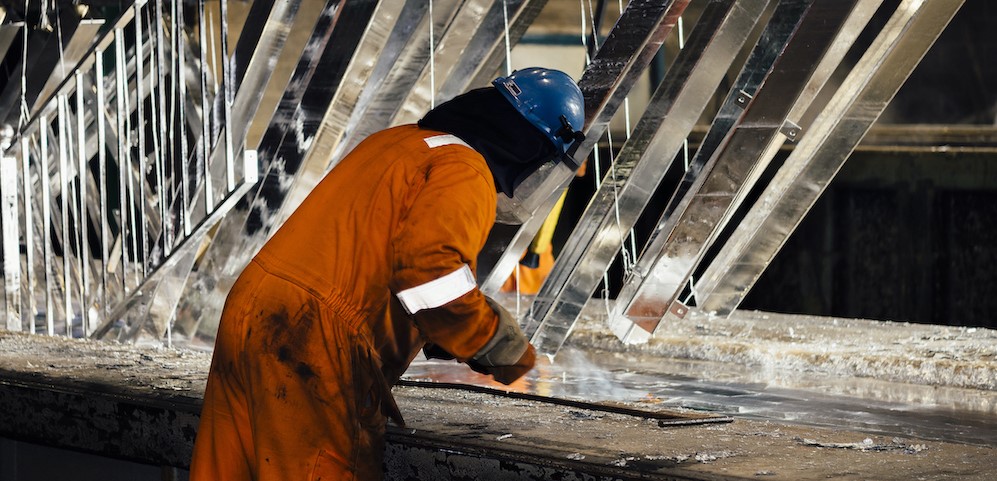
Galvanizing definition
Galvanizing, or galvanising as it is spelt in the UK, is a metal protection process that involves coating iron or steel with a layer of zinc. The zinc coating acts as a barrier for the metal, protecting it from rust and corrosion.
Hot dip galvanizing is the most established method of galvanizing. Most steel finishing providers in the UK offer hot dip galvanizing rather than its alternatives. Without galvanizing, metal corrodes quickly, as the metal is exposed to moisture and other sources of corrosion.
The galvanizing process
There are many stages to hot dip galvanizing, but in summary, it can be divided into four stages: cleaning, fluxing, galvanizing, and post-treatment.
Cleaning
First, the metal is cleaned and degreased, using an alkaline solution that is heated with the residual heat from the galvanizing furnace. The cleanliness of the alkaline solution is maintained, as it continuously flows through an oil separation unit to remove residual oils.
After this, acid cleaning takes place with tanks containing hydrochloric acid. Inhibitor is added to reduce chloride emissions, reduce maintenance of the facilities and improve working conditions for our employees. Spent acid – meaning acid that has become weaker from the cleaning process – is reused, neutralising alkali wastes from other processes.
Fluxing
Once the steel has been cleaned, it is dipped in a flux solution. A flux solution is made of zinc-ammonium chloride which, like the alkaline solution in the cleaning process, is heated with residual heat from the galvanizing surface. The fluxing process removes the remaining traces of oxide and helps prepare the metal for the zinc bath.
Galvanizing
After fluxing, the metal is dipped into a bath of molten zinc. This process forms a metallurgical bond between the zinc and the metal, which means the atoms between them chemically bond instead of just applying a top level coating on the metal surface. The protective zinc coating creates a durable, corrosion-resistant finish that can withstand extreme temperatures, harsh environments, and corrosion.
Post-treatment
Finally, an optional follow-up coat such as paint or powder coating can be applied. While not part of the galvanizing process itself, post-treatment further increases the metal’s durability and corrosion-resistance.
Post-treatment can also include quenching and passivation. These are also optional, but can help preserve the steel further and protect against wet storage stains.
We’ve created a useful animation that showcases the hot dip galvanizing process.
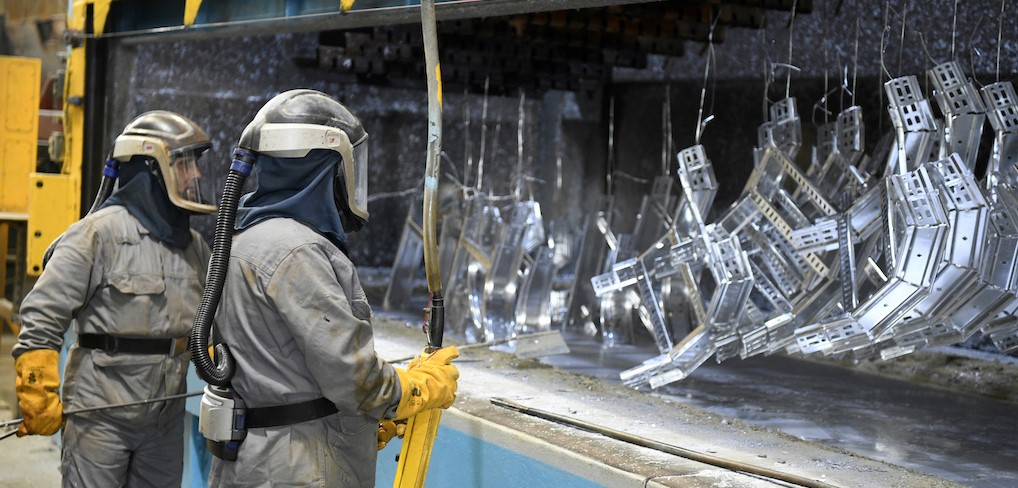
Different types of galvanizing
The above process applies for hot dip galvanizing, but there are numerous types of galvanizing, including:
Hot dip galvanizing
During hot dip galvanizing, metal is dipped into a bath of hot zinc, as detailed before. The heat causes a chemical reaction, causing the zinc to metallurgically bond to the steel. This process makes the metal much more durable compared to surface-level coatings such as paint.
More technically, the process creates a sacrificial anode cathodic protection layer, causing the zinc to corrode in preference to the iron.
There are many reasons to hot dip galvanize your steel, such as increased durability and low lifetime costs.
Cold galvanizing
The metal is coated with cold zinc. Unlike hot dip galvanizing, cold galvanizing does not cause the zinc to metallurgically bond to the metal as there is no heat. As a result, it is not the preferred method of galvanizing, as the zinc layer is prone to chipping. Some argue that it isn’t a form of galvanizing at all.
Spin galvanizing
Spin galvanizing is a method for coating metal that is too small to be dipped directly into a bath. To stop the small pieces getting lost in the bath, they are placed inside a perforated basket first. After being withdrawn from the bath, the basket is spun at high speeds to remove the excess zinc. Like hot dip galvanizing, spin galvanizing has many benefits, as it is the same process but for smaller sized pieces.
Joseph Ash Galvanizing offers a range of galvanizing services to meet your needs, from small components to large structures. Our team of experts use state-of-the-art technology and equipment to ensure that your products are galvanized to the highest standards. Galvanizing is also environmentally friendly, using minimal energy and producing no hazardous waste.
Galvanizing services throughout the UK
No matter your size or sector, Joseph Ash Galvanizing can provide you with a high-quality galvanizing service that will protect your metal products and increase their lifespan.
- Nine sites across the UK ✔️
- Protect steel from rust and corrosion ✔️
- Quality Systems approved to BS EN ISO 9001 ✔️
- Quick turnaround times ✔️
- On-site storage facilities ✔️
Incorrectly venting your steel fabrications before sending them to your local hot dip galvanizing facility can lead to explosive consequences. It’s critical to ensure you follow correct venting procedures to keep your fabrication intact and galvanizing operatives safe. It will also help you achieve the best quality zinc coating.
We’ve created some helpful videos and documents on what could happen if you don’t vent your steel correctly, as well as the correct measures to take.
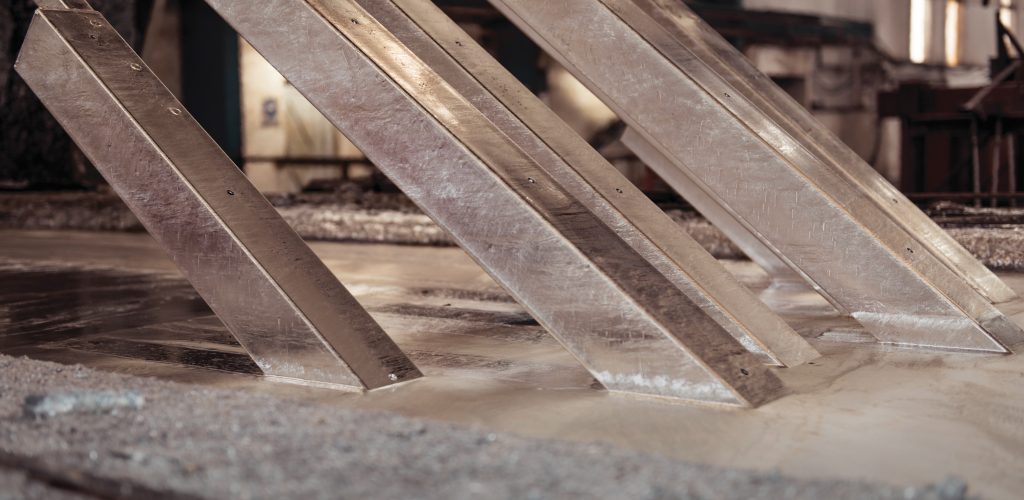
Video 1: Super-heated steam in hollow structures
Process chemicals and air can become trapped in open-ended hollow structures when they don’t have vent holes. The trapped chemicals create super-heated steam when submerged in the molten zinc. If the zinc makes direct contact with the steam through the open end of the fabrication, it will eject out of the bath with extreme force.
Vent holes on the closed end of the steel mean the process chemicals can escape, avoiding the build-up of steam.
Video 2: Trapped air during welding
When welding steel together, it is important to leave seam gaps in the steel to avoid air becoming trapped. If large steel pieces are welded together without gaps, air becomes trapped between them. When dipped in the galvanizing bath, this causes the pressure between the two pieces to build up until they become forcibly separated at high speed.
To avoid this, leave seam gaps between the steel pieces so that air can escape and avoid pressure building.
Video 3: Incorrectly-placed vent holes
We’ve covered briefly why vent holes are needed – to release trapped air and process chemicals. But it’s important to make sure they’re correctly placed to ensure they do their job.
Remember, when welding fabrications that cause closed-off sections, there should be vent holes both internally and externally, as required, to avoid any air or chemicals becoming trapped.
Video 4: Not enough vent holes
Even if you take the previous precautions onboard and add vent holes, you need to make sure you have enough of them to release the air and process chemicals. Both the placement and amount of vent holes are crucial for ensuring there are no explosive results at the galvanizing bath.
If in doubt, always contact your local galvanizing service provider for advice before booking your collection. They can help you determine the correct venting requirements for your individual needs.
Alternatively, you can view our venting tips and tricks poster for more information.
Next pageWhat’s the difference between shot blasting and sand blasting?
Shot blasting and sand blasting are surface preparation methods used to remove corrosion, paint, or other imperfections from metal. Both surface preparation methods leave a metal surface with a smoother, cleaner finish – an essential first step in the metal protection process. These cleaning methods make any subsequent treatment last longer and provide a higher quality finish.
But what’s the difference between the two services?
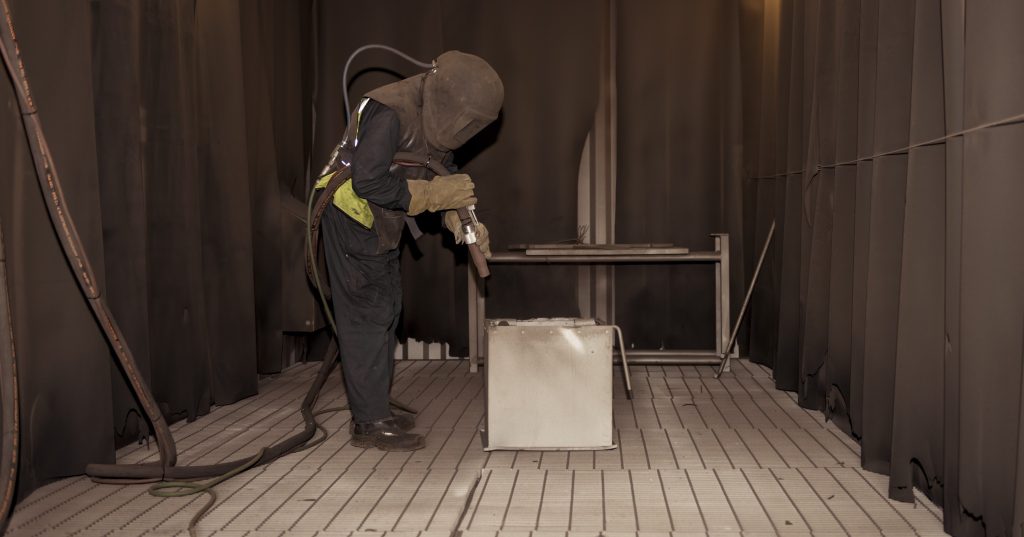
What is sand blasting?
Sand blasting traditionally uses silica sand which is blasted onto the metal to clean it. In more recent times, this has also included glass. The high-velocity sand particles strike the surface, removing coatings, rust, scale, and other contaminants. The texture of the surface after sand blasting depends on the size and type of abrasive material used.
Sand blasting is effective for cleaning and surface preparation, but leaves a smoother finish than shot blasting. While smoothing the steel is an important step for surface preparation, the durability of secondary coatings such as paint may be compromised if the surface is too smooth. Surface coatings need to be able to adhere to the steel, which is harder when the steel is completely smooth.
Unlike shot blasting, sand blasting can have negative impacts on health. This is because the fine dust residue created from the process could be inhaled (even when following the correct health and safety measures), as the particles remain in the air for several days. And this is without wind, so imagine how far these particles can travel on bad weather days!
Dust residue from sand blasting can result in dangerous amounts of respirable crystalline silica for both the operator and the consumer. Consequently, sand blasting with silica sand is banned in the UK.
What is shot blasting?

Shot blasting uses small amounts of metal, such as aluminium oxide or carbon grit, which is propelled onto the steel. The small particles are known as “shot”, hence the process’s name. The main difference between shot blasting and sand blasting is the material used. Because of this difference, shot blasting does not result in inhaling any residue when using the correct PPE and is, therefore, not forbidden.
Metallic shot can also be re-used multiple times, reducing material costs. The ability to reuse material also means shot blasting is more environmentally friendly than sand blasting.
Shot blasting also results in a slightly different finish compared to sand blasting. Sand blasting creates a fully smooth profile, whereas shot blasting creates a slightly textured surface profile. The added texture allows for any secondary coatings to adhere to the steel more, increasing the coating’s durability.
In summary, shot blasting and sand blasting use different materials, resulting in slightly different surface finishes. Sand blasting poses a health and safety risk and is not the preferred method of surface cleaning.
At Joseph Ash Galvanizing we take pride in our health and safety measures, following health and safety laws and regulations when carrying out shot blasting, galvanizing, powder coating and duplex coatings projects. We also follow BS EN ISO 1461 and BS EN ISO 9000 quality assurance specifications. Our commitment to health and safety is also evidenced by the fact we’ve won RoSPA Gold awards for excellent health and safety standards, nine years running.
Contact us today to discuss your shot blasting requirements.
Next pageWhile hot dip galvanizing is a common metal treatment method, spin galvanizing is key for galvanizing small pieces. We cover what spin galvanizing is, how it works, and the benefits it offers here.
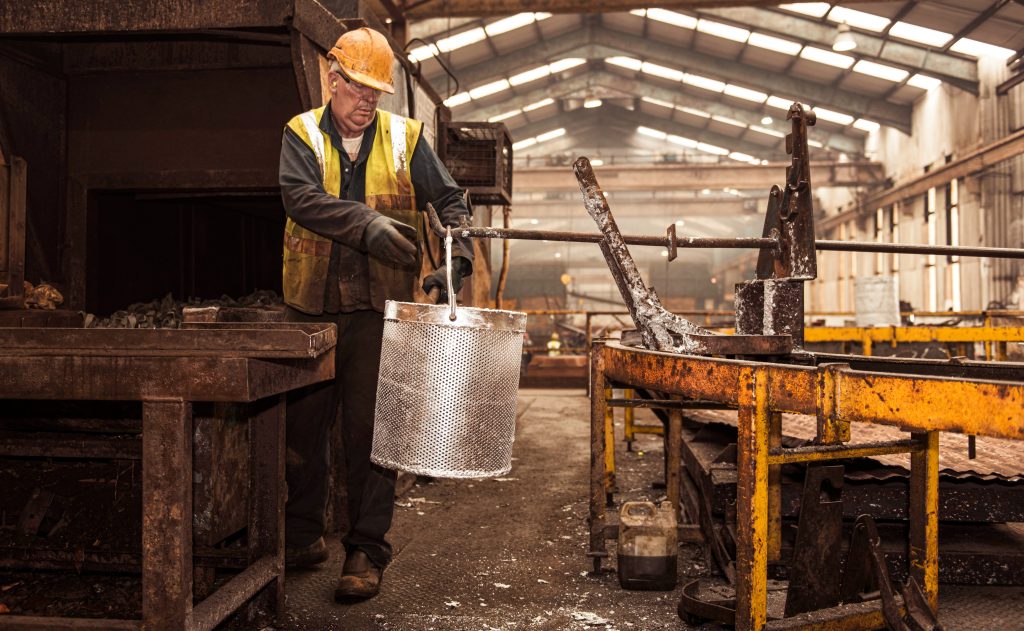
What is spin galvanizing?
Spin galvanizing is a process used to coat small metal parts with zinc. It is particularly useful for coating small, complex parts that may be difficult to dip into a galvanizing bath. The process involves placing the pieces in a basket, which is then submerged in molten zinc, withdrawn, and spun at high speeds. Spin galvanizing is used to increase the lifespan of steel by making it more robust, durable, and rust-resistant.
How does spin galvanizing work?
Spin galvanizing involves several steps. First, the parts that need treating are cleaned and prepared for galvanizing. This involves removing any dirt, grease, or other contaminants by using a method such as shot blasting.
Next, the parts are placed in a basket which is then submerged into molten zinc. The basket acts as a barrier, stopping the pieces from being lost in the bath. Once a zinc/alloy layer forms, the basket is withdrawn and spun at high speeds. The spinning action distributes the zinc evenly over all parts and removes any excess, creating a uniform coating.
Finally, the coated parts are removed from the basket and inspected to ensure that the coating is even and free of defects.
Benefits of spin galvanizing
Spin galvanizing has numerous distinct benefits:
Protect small pieces: One of the main benefits of spin galvanizing is that small parts can be galvanized without being dipped directly into a bath. You gain the benefits of hot dip galvanizing without losing any pieces. This makes it an ideal solution for protecting fasteners, fixings, hinges, and chains.
Increased durability: Unlike surface-level coatings such as paint, the zinc layer used with galvanizing chemically bonds to the metal, making it stronger against corrosion. The zinc coating is also thicker than alternatives, further contributing to its durability. The increased durability enhances the metals lifespan, saving you time and money on repeated coatings.
Environmentally friendly: Galvanizing produces less waste compared to other methods, as it only uses the amount of zinc needed. This makes it an environmentally friendly option, fitting into a circular economy.
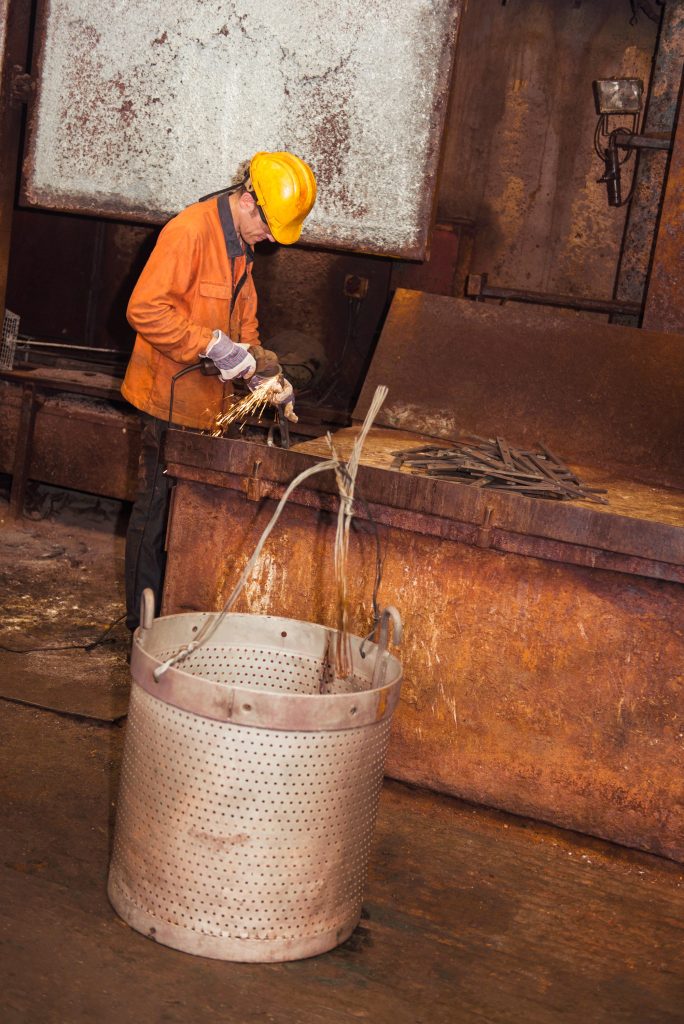
Save money: You can expect to see a greater return on investment with spin galvanizing. Spin galvanizing makes the metal more durable, reducing the frequency of maintenance needed, and reducing the associated labour costs such as transportation. It is also a fast process with a short turnaround time, so the parts are returned to you quicker.
Spin galvanizing is a cost-effective, efficient, and environmentally friendly method for coating small parts with zinc. It offers enhanced adhesion, consistency, and reduced material waste compared to other steel protection methods. It is the ideal choice for protecting your small metal pieces.
At Joseph Ash Galvanizing, we offer spin galvanizing at our Telford branch. We can collect your small metal parts and return them to you with our BS EN ISO 9001:2015 quality finish. Contact us today to learn more about how we can help you protect your metal from rust and corrosion.
Next pagePowder coating is a popular alternative to paint that serves many benefits that paint cannot. While the two coating methods may seem similar, powder coating has numerous benefits compared to paint. We cover what powder coating is and what benefits it brings. We will also explore why powder coating is better than paint, and its relevance for various industries.
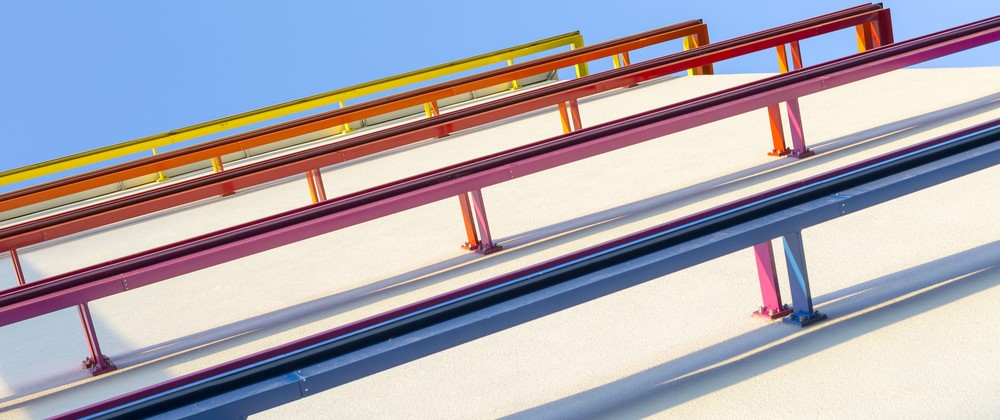
What is powder coating?
Powder coating is a process that involves applying a dry powder to a metal surface. The powder is sprayed on the surface with a spray gun, and the fabrication is then cured in an oven under a high temperature to form a tough, durable skin. It can be applied over galvanized metal to make it even more durable.
Like paint, powder coating is used for protecting the material underneath, and enhancing the steel’s visual appeal with a wide range of possible textures and colours. However, powder coating is superior to paint as it is cheaper, quicker, more durable, and more environmentally friendly.
Benefits of powder coating
Powder coating offers several benefits over traditional paint, including:
Durability: Powder coating is more durable than traditional paint. It is resistant to chipping, scratching, and fading, leaving the fabrication looking nicer for longer. Because powder coating reduces how often the steel needs to be treated, maintenance becomes cheaper overall.
Time-saving: Paint needs several days to dry after it has been applied. It also needs multiple coats to achieve the desired result. In contrast, a powder coat can be completed in one sitting and has a quicker drying time. This means you get your fabrication back quicker and spend less time waiting.
Environmentally friendly: Powder coating is an environmentally friendly alternative to traditional paint. It produces less waste, and the powder can be recycled. Additionally, paint contains toxic solvents that damage the environment. The powder coating solution does not contain toxic solvents and is safer for operators to apply, provided the correct PPE is used for the job.
Versatility: There’s no need to compromise on aesthetic appeal when you opt for powder coating. Available in many colours and textures, there’s plenty of choice on colour and finish, including metallic, glossy, and matte. This versatility allows for greater customization and design options.
Cost-effective: Powder coating is a cost-effective alternative to traditional paint, thanks to its increased durability and recyclability. The reduced costs come from the reduced need to re-coat your steel or aluminium.
Powder coating for steel
Powder coating is beneficial for steel in a wide range of industries. The automotive industry can benefit from powder coating as it can coat everything from cars and trucks, to motorcycle parts and trailers. It can also be used in the aerospace and marine industries to coat aircraft parts and marine equipment.
The construction industry can coat structural steel, fencing, gates, and other building components. Similarly, it is also used in the architectural industry to coat window frames and doors. Powder coating is most beneficial for industries that require a durable, long-lasting coating that can withstand harsh environments. It is ideal for increasing the visual impact of your metal and helping it stand out. You can view our photo gallery if you’d like to see some examples.
Our dedicated facility in Sittingbourne, Kent, is AkzoNobel approved, and skilled in using a wide range of powder coating paints from many other suppliers.
Contact us today for a quote or to book a collection.
Next pageGalvanizing and powder coating can be used together
Hot dip galvanizing and powder coating are the most popular and well-known methods of steel protection. People often consider using only one type of coating, based on the desired outcome for the steel fabrication. But what happens when two methods of coating are used at the same time? A duplex coating is achieved.
The term ‘duplex coating’ covers any type of coating that uses two methods together. However, at Joseph Ash Galvanizing, we use this term for the combination of hot dip galvanizing and powder coating – a powerful synergy, suitable for all types of steel fabrication.
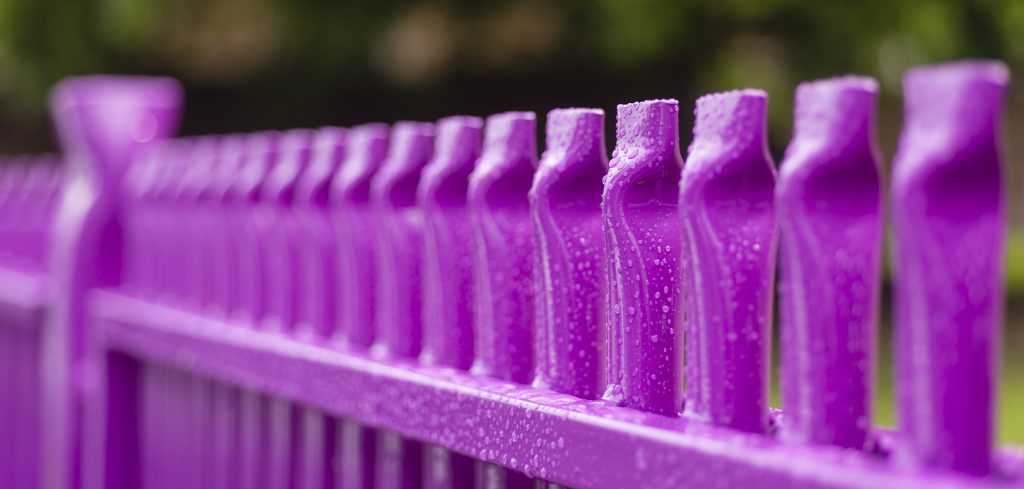
Benefits of duplex coatings
1. Increased durability
When used independently, hot dip galvanizing creates an incredibly durable finish. However, as steel ages, the galvanized zinc coating will eventually erode, making the steel more susceptible to atmospheric attack. Therefore, covering it with an extra layer increases the lifespan even further. The extra coat provides an additional barrier, slowing down the erosion rate and providing a superior level of protection.
2. Environmentally friendly
Hot dip galvanizing and powder coating have minimal impact on the environment. Our plants our self-contained, with steel going in at one end and the final product coming out at the other. This allows us to control and reuse the waste products emitted, minimising the amount released into the environment.
The galvanizing process never uses more zinc than the steelwork needs to coat it due to the metal’s non-ferrous properties, reducing material waste. Both powder coating and zinc coatings allow the steel to be recycled without loss of properties, contributing towards the principles of a circular economy.
3. Cost effective
The cost of duplex coatings is low compared to other metal protection methods. Thanks to its high durability, duplex coated steelwork needs treatment less frequently, resulting in long-term money savings.
Many galvanizing plants do not offer both hot dip galvanizing and powder coating. Joseph Ash Medway, however, is a one-stop-shop service provider for hot dip galvanizing, powder coating, duplex coatings and shot blasting, providing all services under one roof. This drastically reduces the costs associated with transportation and having to use two suppliers.
4. A wide range of colours
While galvanizing will leave your steel with a shiny silver finish, powder coatings come in various colours. This can be desirable and impactful depending on what you are having coated; imagine a bright and vibrant fence or gate, or fully coloured sculpture placed in the middle of a busy city. There are plenty of photos in our gallery for inspiration. If you can think of a colour, we can produce it! You can also choose to have a textured finish with varying matt, satin, and gloss levels.
5. Quality assured
Although galvanizing and powder coating have a traditionally long lifespan, not all steel coating service providers are equal. All steelwork treated at Joseph Ash plants adheres to the coating’s requirements of BS EN ISO 1461 and BS EN ISO 9000 quality assurance specifications. You can rest assured knowing that we hold numerous accreditations from various organisations.
Our Medway plant offers a 40-year guarantee on duplex coatings (subject to T&Cs). If you’re interested in Joseph Ash Medway’s specialty duplex coatings, get in touch today to discuss your requirements.
Next pageWhy should I galvanize my steel?
Galvanizing is a steel protection method used to protect steel against corrosion. However, you may not know why galvanizing is better than alternatives for coating steel. We’ve covered some of the best reasons to galvanize steel here.

Galvanizing saves money
While the initial cost of galvanizing may be more than paint, galvanizing ends up cheaper in the long run. Paint needs to be touched up more frequently because it is less durable than galvanizing, causing you to spend more over time.
According to the Galvanizer’s Association, “Over a 25-year project life, the cost of a ‘cheaper’ paint system is almost 70% more than the cost of galvanizing. Likewise, the cost of a more ‘expensive’ paint system is almost double that of galvanizing.”
Mick Jackson from Joseph Ash Galvanizing also shares his perception:
“Imagine a bridge made from non-galvanized steel. It would need maintenance every year to protect it from rust and corrosion. It would also need repainting at regular intervals. This requires paint, a workforce, transport for the workers and a means to protect the land or water below from paint contamination. It’s time-consuming and expensive. This maintenance is unnecessary if the same bridge is made from galvanized steel.”
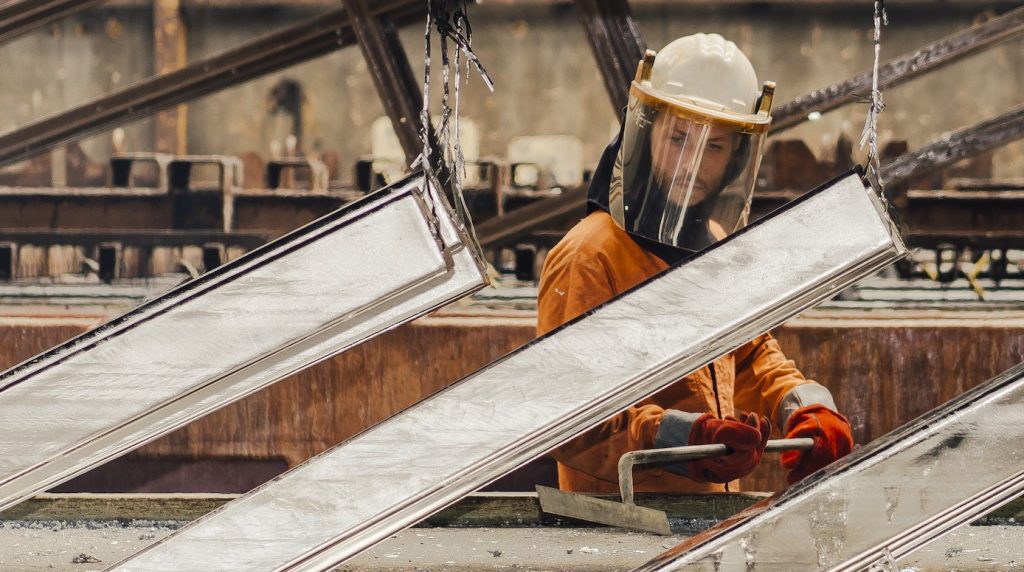
Increased lifespan
A hot dip galvanized finish gives steel a long life and durability of between 34 and 100 years, depending on the environment. In addition, it creates a maintenance-free finish, which lessens the carbon emissions usually associated with the upkeep of non-galvanized steel.
Complete coverage against corrosion
When steel dips into a bath of molten zinc, the entire piece of metal, including the awkward corners, narrow gaps and hollow sections, is covered in a uniform coating of equal thickness. Alternative coating methods such as paint cannot achieve the same consistency. This allows the fabrication to last for longer.
The thickness of the zinc layer achieved from galvanizing is measured using an electronic probe to ensure it complies with BS EN ISO 1461 – the British Standard for hot dip galvanized coatings. Therefore, you can be sure your steel is reliably protected from corrosion, every time.
Not only is the galvanized coating quality standardised, it’s also much quicker to dry than paint. This means your steel fabrication is fit for use much sooner – a necessity if you need to quickly replace corroded steel.
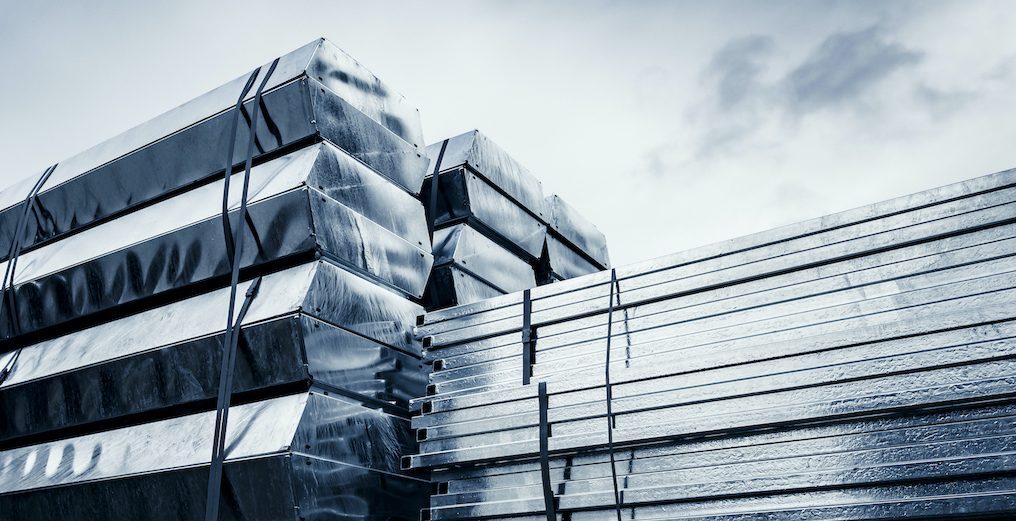
The steel also becomes tougher when there is a layer of zinc over it. Steel used in transport and construction is stored, moved, and handled, which would easily chip if it didn’t have a protective coating. During the hot dip galvanizing process, the zinc metallurgically bonds to the steel. As a result, hot dip galvanized steel is far less likely to be affected by potential damage.
Galvanizing is sustainable
Both the galvanized steel product and the galvanizing process itself are sustainable, fitting into a circular economy. Once the galvanized steel eventually reaches its end of life, it can be melted, repurposed, and repeatedly used without losing quality.
Our galvanizing plants are self-contained; steel goes in at one end and the final product comes out at the other. As a result, the emission levels are controlled and the excess waste products can be repurposed. We’ve created a useful animation that shows the galvanizing process and how we control emissions.
Our galvanizing services are to Environmental Management ISO14001 Standards, so you can be sure you’re partnered with a company that cares about the future.
The leading galvanizers in the UK
Joseph Ash Galvanizing has nine sites throughout the UK, offering collection and delivery of steel.
- Protect steel from rust and corrosion for multiple decades
- Quality Systems approved to BS EN ISO 9001
- Fast turnaround times
- On-site storage facilities
- Fits into a circular economy